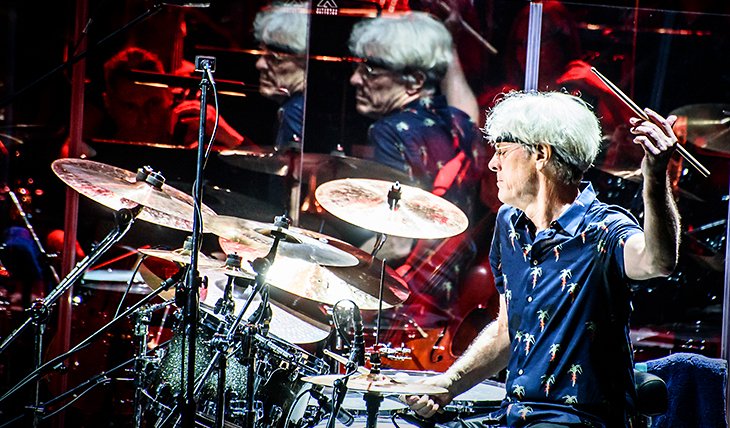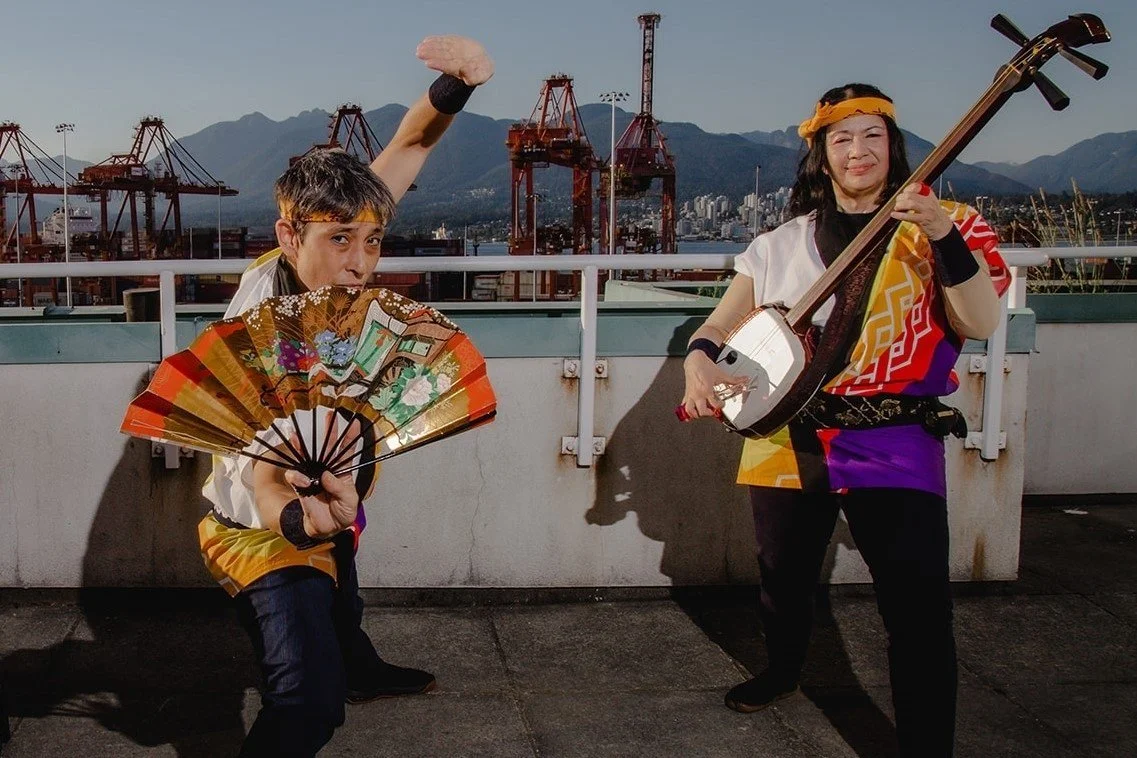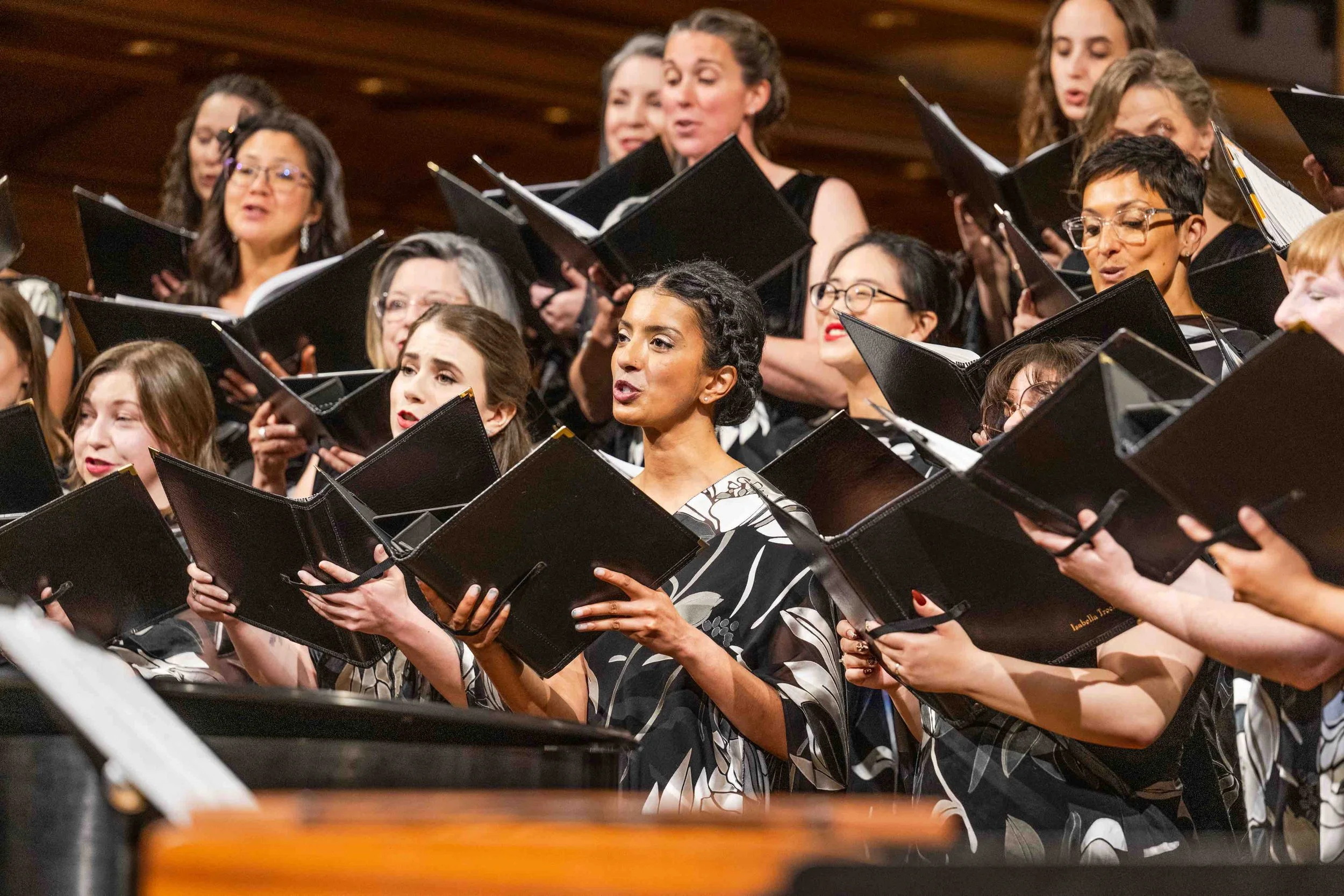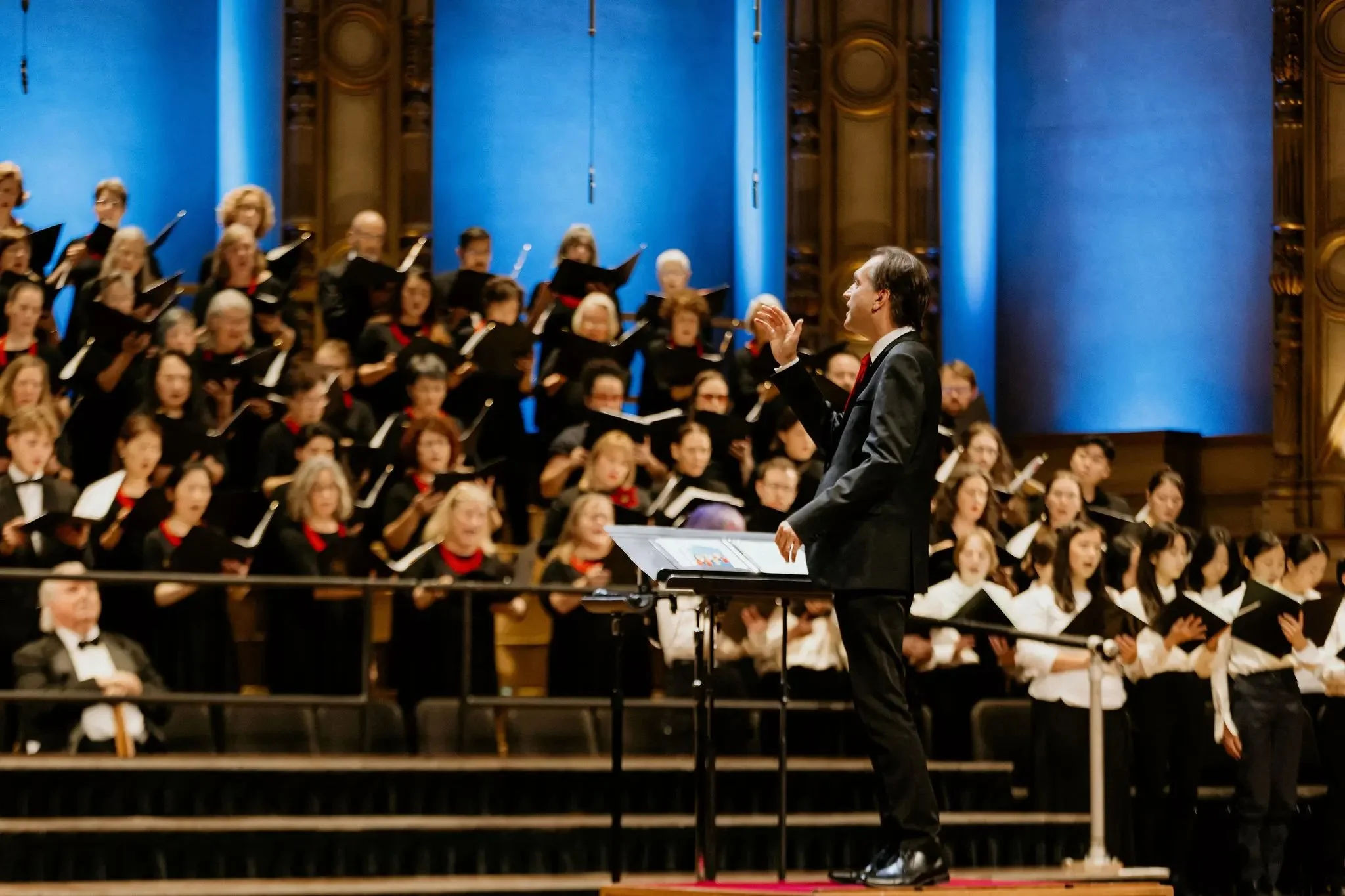Music review: Stewart Copeland and the VSO rock the Orpheum with Police Deranged
Making innovative use of the symphony, the drumming legend made sure everyone onstage and off had a blast
Stewart Copeland’s Police Deranged is at the Orpheum until October 1
DRUMMING GOD STEWART Copeland promised he would turn the Vancouver Symphony Orchestra into a “raging rock band” off the top of his Police Deranged show at the Orpheum Friday night.
Mission accomplished.
Mixing the showmanship of a wildly respected icon who’s toured the world’s biggest stadiums with the knowhow of an assured orchestral composer, the drummer built both volume and rhythmic texture in reimagined Police hits like “King of Pain”, “Don’t Stand So Close to Me”, and “Every Little Thing She Does Is Magic”.
Clearly excited to be in the presence of rock greatness, everyone was having a blast. Principal percussionist Vern Griffiths was bopping at the podium and leading the audience in “Walking on the Moon”’s “ee-yo-yos”; members of the string section were bobbing their heads; and kickass guest bassist Armand Sabal-Lecco had a perma-grin glued to his face. Meanwhile, three “Derangettes” singers gave soul to The Police’s massive back catalogue of hits.
But the person who seemed most pumped to be there was the hypercaffeinated Copeland himself, bouncing around in skinny jeans, trademark headband, and a plaid shirt. He even took a psyched turn as conductor, trading places with Griffiths, who briefly grabbed a seat on the throne behind the kit. The crowd cheered more like it was at a Rogers Arena Police reunion concert than an evening at the Orpheum. There was even a busy merch lineup in the lobby, where people snapped up everything from retro Zenyatta Mondatta T-shirts (guilty as charged) to dad-friendly Police Deranged golf shirts.
Copeland, now a veteran of operas and symphonic film scores, made full, exuberant use of the orchestra—turning the bassoons and oboes into percussive instruments, punctuating the night with thunderous sax blasts and pure power strings. Bet you never imagined a sweeping harp accompanying “Message in a Bottle”.
Highlights included “Spirits in the Material World”, with its swoony violin glissandos, and “King of Pain” recast with staccato reeds and syncopated strings. “Message in a Bottle” was a full-orchestra blowout—an elaborate blend of spiky bassoons and high violins, with Copeland’s sticks flying virtuosically at the kit.
How deranged were some of the arrangements? “Roxanne” got a full, layered deconstruction, its simple reggae-influenced lines fragmented, refracted, and repeated, vocally and orchestrally, so that it was almost unrecognizable.
Though Copeland joked about “banging shit” throughout, calling the orchestra “bomb proof”, what he accomplished on the evening could not have been easy. For fans whose tastes ran the gamut from ‘80s new wave to, say, Stravinsky, it was a fulfilling night—the drum master’s lightning-fast playing easily appreciated over the full orchestra.
There’s a final show tonight. The meeting of rock stars and symphonies is not unusual—philharmonics have taken the stage with everyone from Metallica to Weezer. But the brilliance of this teaming was that it was no symphony-as-backup. Copeland instead found a true collaboration that was pure magic for those who showed up for the hits, but somehow felt as new and daring as The Police did in 1978.













